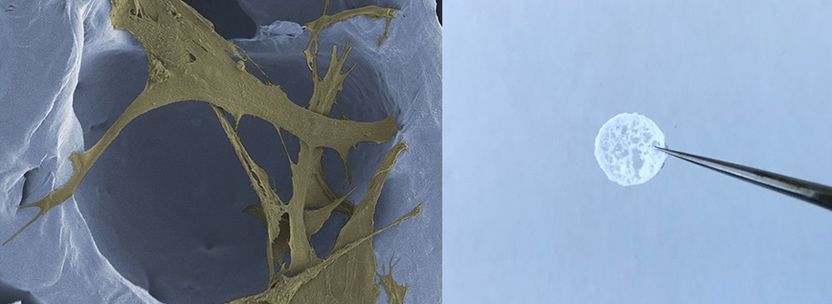A global breakthrough in the study of a protein linked to the spread of viruses
Professor Denis Archambault of the Department of Biological Sciences of Université du Québec à Montréal (UQAM), and doctoral student Andrea Corredor Gomez have made a major discovery in the field of molecular biology. They have unlocked some of the secrets of a viral protein, known as Rev, which is very different from other proteins of the same type studied to date. The results of their research were published in the Journal of virology.
The Rev protein plays an essential role in the propagation mechanism of certain types of viruses within an organism. The work of researchers Archambault and Gomez Corredor focused on this protein, and more particularly on a structure called the "nuclear localization signal" (NLS). They used as a model the Rev protein of the bovine immunodeficiency virus (BIV), a retrovirus related to the AIDS virus in humans.
Over the years, several researchers have looked at the NLS in different Rev proteins. Until now, the study of these proteins demonstrated the presence of a monopartite NLS, i.e. an NLS comprising one continuous sequence of amino acids. Much to their surprise, Denis Archambault and Andrea Gomez Corredor discovered that the BIV Rev protein has a bipartite NLS – composed of two amino acid motifs separated by a sequence of additional amino acids – a world first for this type of protein in all retroviruses studied to date, including the AIDS virus.
In addition, although other types of protein contain a bipartite NLS, this newly discovered NLS does not match any other bipartite NLS identified until now, whatever the type of protein studied. Normally a bipartite NLS is composed of two amino acid motifs separated by a spacer sequence, which is either short (about 10 amino acids) or long (about 30 amino acids). In the BIV Rev protein, the NLS is atypical because of the length of the spacer sequence (neither long nor short) and the amino acid composition of that sequence.
Finally, the authors also identified a new type of nucleolar localization signal (NoLS) which allows the Rev protein to penetrate inside the nucleoli. Although the role of this localization is unknown, it is the first time this type of signal has been reported in proteins of cellular or viral origin.
A first step toward further discoveries According to Denis Archambault, "What we have here is a Rev protein whose characteristics are very different from the other proteins of the same type that have been studied to date. Although our findings relate to basic research, our study demonstrates that it is possible to learn a lot about viruses, and in particular a virus of animal origin. We now have a specific model that will allow us to study further the relationship between the localization of a protein and its effect on the host cell, and possibly the entire organism."
Most read news
Other news from the department science

Get the life science industry in your inbox
By submitting this form you agree that LUMITOS AG will send you the newsletter(s) selected above by email. Your data will not be passed on to third parties. Your data will be stored and processed in accordance with our data protection regulations. LUMITOS may contact you by email for the purpose of advertising or market and opinion surveys. You can revoke your consent at any time without giving reasons to LUMITOS AG, Ernst-Augustin-Str. 2, 12489 Berlin, Germany or by e-mail at revoke@lumitos.com with effect for the future. In addition, each email contains a link to unsubscribe from the corresponding newsletter.
Most read news
More news from our other portals
Last viewed contents
Back_(horse)
Spondylopathies
Eugenius_Warming
Agilent to Acquire BioTek

Exploiting deep learning to develop sustainable COVID-19 inhibitors - Collaboration Eisbach Bio GmbH & Technische Universität Kaiserslautern
Mohammed_Asha



















































